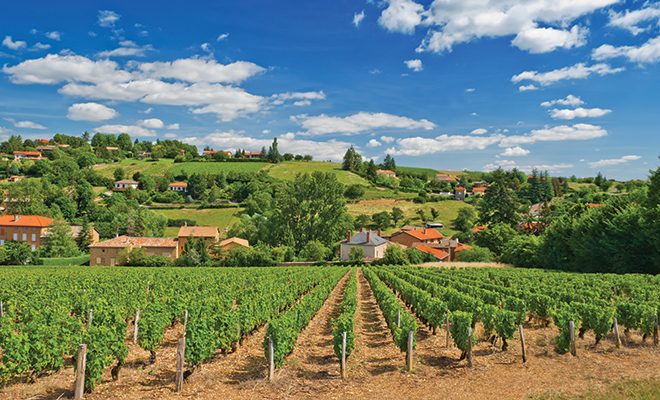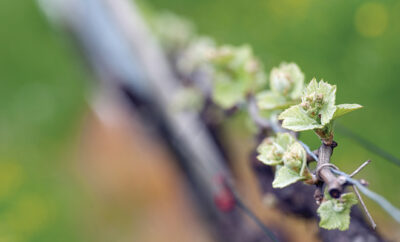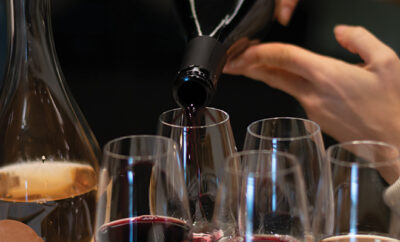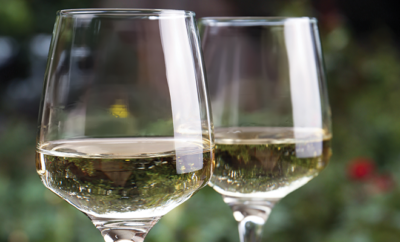
It’s Beaujolais Season!
Beaujolais Season is upon us! More enthusiasts of French tradition are celebrating the love of “new wine” during the rich autumn season. In your area, you may find local French networking and social clubs hosting events to promote the awareness of the region of Beaujolais and the new wine season it represents. In France, it’s a celebration of the first wines of that vintage year to be released. It’s a kick-off to wine season!
What Is Beaujolais?
The answer begins with where. Beaujolais is a friendly region in eastern France where, surprisingly, the perceived snobbery of French wine is missing. In fact, the folks of the Beaujolais Region truly celebrate the organic nature of wine grape growing, harvesting and creating Beaujolais wine from thick-skinned Gamay Noir grapes, which are easier to grow than Pinot Noir and ripen quite a bit earlier in the season. In this region, they don’t believe in manipulating the wine and instead want the wine to be as nature intended, believing the Gamay grape will express itself!
The phrase “Le Beaujolais est arrivé!” announces the success of a great wine harvest. At 12:01 a.m. on the third Thursday of November, Beaujolais can be officially released for consumer purchase. The French government established this date to ensure fairness in the industry so that all producers of Beaujolais would have an equal opportunity for sales and exposure. Exceptions are made for wines that are exported and require travel time. This year that date falls on November 19, 2015.
Wine expert Karen MacNeil, author of The Wine Bible, has described Beaujolais as “the only white wine that happens to be red.” The Gamay Noir grape creates a flavorful red wine, mostly fruity in a tart cran-raspberry kind of way, and in fact it can be quite light in color. On the nose, one might even pick up a bit of lavender, earthy moss or toasted English muffin. The wine is very unpretentious and appeals to folks who react negatively to high tannic wines such as Zinfandel or Cabernet Sauvignon because it tends to be lower in both tannins and alcohol. Served a bit chilled, it’s delicate enough for cheese plates, pâtés, appetizers, grilled fish and our Thanksgiving holiday menu of poultry, sweet potatoes, green beans and the delicious casseroles so popular during this time of year.
As the season’s first wines are harvested, bottled and enjoyed, look for Beaujolais as early as October at your supermarket. If you shop at a specialty market, ask the owner about the Beaujolais and watch her face light up as she recommends wines and describes which ones have interesting background stories of intrigue, scandal and family drama!
Beaujolais Basics
Beaujolais refers to the basic level of Gamay wine produced in this region of France. The harvest is done by September, bottled and released in November.
Beaujolais Villages is the next level of quality Beaujolais that is released in spring. The Gamay fruit comes from the upper region of Beaujolais, which is a bit more hilly with a granite terroir.
Beaujolais Nouveau refers to the popular style of “new” wine from Beaujolais, which was a brilliant marketing strategy and created a trend for consumers craving something different from the classically offered wines of the season. As this trend took hold, sales of Nouveau increased; other producers of Beaujolais jumped on the nouveau train, racing to produce lighter red wines in demand worldwide. But as this trend continued, the Gamay grape suffered in reputation with a new perception that it was a weaker, sweeter varietal of wine. Paralleling America’s fascination with White Zinfandel in the 70s, Beaujolais experienced a public relations problem.
Cru Beaujolais refers to areas that produce Beaujolais rather than to specific vineyards. Crus are not allowed to produce the nouveau style, as it’s perceived to devalue the image and expectation of quality Beaujolais. In fact, you may only see the word Beaujolais on the back label where the origin is listed. These vintages can be stored for more than five years and often up to ten due to their higher tannic quality, structure and complexity.
Gamay Beaujolais grapes are grown primarily in California. You may find popular American brands capitalizing on the fresh flavors this varietal offers.
Prices for Beaujolais Nouveau in the U.S. will vary from $6.50 to $15.99. If you’re one to collect cases of wine for long-term storage, the Beaujolais and the Beaujolais Villages are not good candidates. They are lower in alcohol and tannins, typically unable to maintain quality for more than two years. But, by all means, buy a case to use through your holidays, share with friends or give as hostess gifts throughout the current season.
For me, the biggest reason to enjoy the season’s new Beaujolais is to remember the history and harvest work that goes into each glass that I enjoy with family, friends and great food as part of a joyful lifestyle. Happy Thanksgiving! HLM
Sources: discoverbeaujolais.com and karenmacneil.com.







